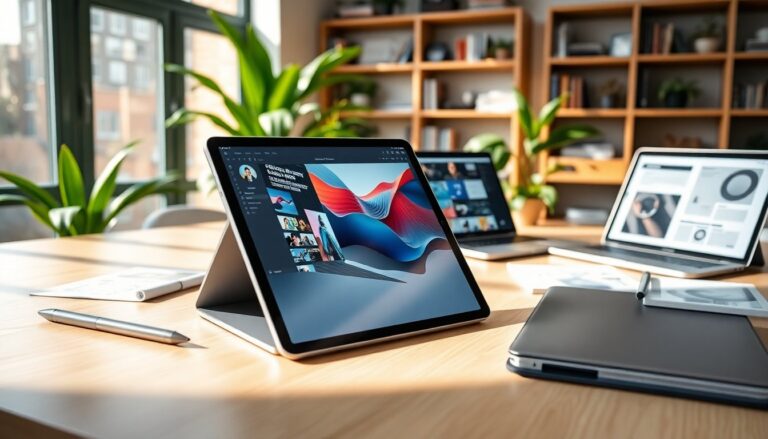Argomenti trattati
The latest iteration of Apple’s tablet, the M5 iPad Pro, has sparked discussions among tech enthusiasts eager to understand its enhancements. While the design remains largely unchanged from the M4 model, one must consider: is the upgrade worth it? This article evaluates the new features and performance metrics to determine whether the M5 is a worthwhile investment for existing iPad users.
After testing the M5 iPad Pro, it is evident that the main improvements lie in its hardware. Users of the previous M4 model may find little reason to make the jump, particularly those who opted for higher-tier configurations. This review highlights the notable advancements and considers the implications for potential buyers, especially those using older models or entry-level configurations.
Incremental upgrades in performance
The transition from the M4 to the M5 is characterized by subtle enhancements rather than a revolutionary leap. Both devices share a similar aesthetic, with no significant changes in weight or screen technology. They both feature impressive Tandem OLED displays, ensuring users continue to enjoy vibrant visuals. Battery life remains consistent, and camera specifications have not changed.
Performance enhancements
The most notable distinction lies in the M5 chip, which utilizes a third-generation 3nm manufacturing process. This new chip incorporates advanced Neural Accelerators that are said to enhance local AI tasks and gaming experiences. Apple claims that the M5 chip delivers a speed boost of up to 3.5 times compared to the M4, particularly in graphics rendering and machine learning tasks. However, the real-world implications of these claims vary, especially when compared to the M1 iPad Pro.
While Apple promotes the M5 as a game changer, users might find that the tangible benefits are limited on the iPad. Many of the performance improvements are more pronounced on Macs, where the software ecosystem is richer and better suited for extensive multitasking and application development. iPadOS 26 offers some enhancements, but the lack of a robust app ecosystem for machine learning on the iPad hinders users from fully leveraging the M5’s capabilities.
Evaluating AI performance
Apple’s claims about the M5’s AI processing power are intriguing, yet the practical implementation on the iPad leaves much to be desired. My exploration into local language model (LLM) capabilities revealed that the performance gains touted by Apple are not universally experienced. In my tests with various configurations, including both the M4 and M5, I observed only modest improvements in token generation and latency.
Benchmarking results
Upon conducting tests with third-party applications, I found that the M5 delivered between 1.1 to 1.5 times the performance of its predecessor during intensive tasks. This was significantly lower than Apple’s advertised 3.5 times improvement. For instance, while using Llama-3.1-8B-Instruct, I recorded a 50% increase in tokens processed per second, but this still fell short of the transformative leap suggested in Apple’s marketing materials.
Furthermore, my attempts to explore the full potential of the M5’s Neural Accelerators through custom applications revealed that much of the promised performance gain is contingent on future software updates. Currently, the lack of a suitable development environment for LLM applications on iPadOS limits the M5’s capabilities, leaving many users feeling underwhelmed.
Assessing the value of the M5 iPad Pro
The M5 iPad Pro features incremental upgrades that may benefit power users requiring more robust performance. However, for those already satisfied with the M4 iPad Pro, the latest model might not justify the investment. The advancements in AI performance, while promising, remain largely theoretical due to the absence of a solid app ecosystem on iPadOS.
As the software landscape evolves, particularly with anticipated updates to Apple’s MLX framework, there may be untapped potential within the M5 chip. Until then, those seeking a powerful machine learning environment may find greater value in opting for a Mac over the iPad Pro.

